Unless you’re a camera enthusiast, you probably take most of your photos and videos with a smartphone.
And you’re not alone: according to UK photo printing company Max Spielmann (via Digital Camera World) around 92.5% of the estimated 4.7 billion photos captured each day are taken using a phone.
That’s a lot of people relying on their phones to capture the world around them every single day. So, it probably goes without saying that cameras are a crucial part of modern handsets.
However, as you’re probably aware, image and video quality varies hugely depending on the phone you choose. Many flagship, mid-range and even budget phones can take good photos, but only a select few reach an elite level when it comes to photography and/or videography.
In this article, we’re showcasing the 10 absolute best from the extensive selection that we’ve tested. If you want to take consistently superb photos or videos, you’ve come to the right place.
Why you should trust us: Phone reviews and buying advice have been a staple of Tech Advisor’s coverage since the original iPhone was released in 2007 and Android made its first headlines in 2008.
We’ve guided you through 2G, 3G, 4G and 5G; we’ve reported on the rise and fall of Windows Phone, BlackBerry phones and LG phones. We’ve seen companies push the boundaries of what is possible on such a small device, continuing to make leap forwards in terms of both hardware and software.
Both of these factors apply to smartphone cameras, which have gone from basic, low-quality sensors in the early days to some of the most advanced lenses you can find. Whether you want to capture the natural world, urban environments, people, low-light scenarios or just memories with family and friends, there’s a camera phone to suit you.
We perform in-depth, real-world testing on every new phone that’s worth buying (dozens every single year), taking loads of test photos and videos across all the main modes. We adopt it as our primary phone for the most authentic experience possible and making sure we are in a position to give you the best possible phone buying advice.
Best camera phone 2024
1. Xiaomi 14 Ultra – Best overall
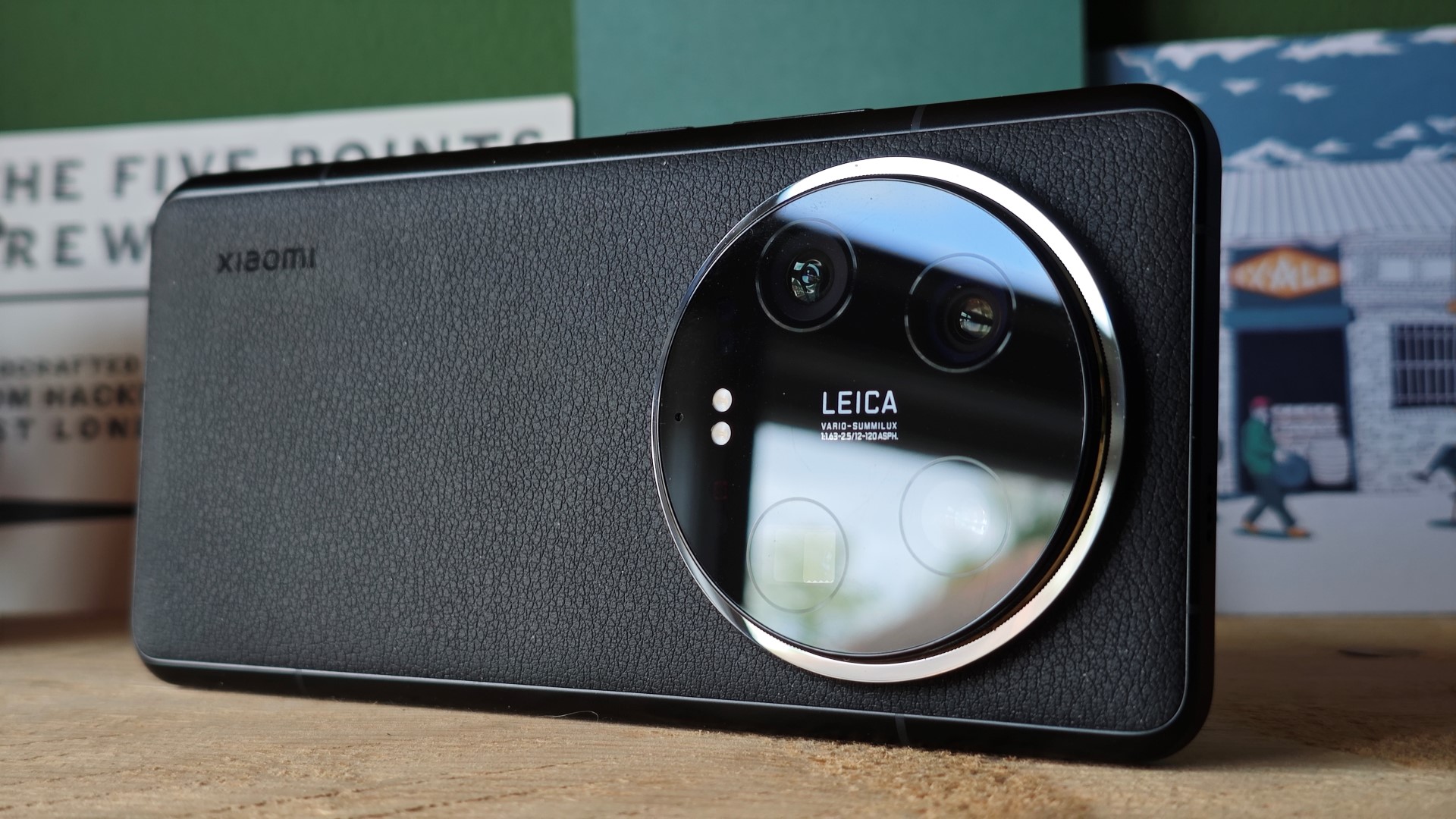
Pros
- Incredible main lens
- Excellent ultrawide and telephoto sensors
- Great selfie camera
- Impressive Photography Kit accessory
Cons
- Expensive
- Photography Kit sold separately
The Xiaomi 14 Ultra is the best camera phone you can buy right now. Paired with the optional Photography Kit accessory, this is the first phone that can genuinely replace a DSLR for many people – it’s really that good.
Across all four 50Mp rear Leica lenses – variable-aperture main, ultrawide, 3.2x floating telephoto and 5x telephoto – you can expect stunning results. It’s an excellent point and shoot camera, or you can dive into the settings and really fine-tune images to your liking.
The way the camera captures light is a particular highlight, to the extent that many people wouldn’t believe some photos came from a smartphone. The 32Mp selfie camera is also superb, while video is up there with the best on any smartphone.
The Xiaomi 14 Ultra is expensive, even before you pay extra for the Photography Kit, but it’s worth it for photography enthusiasts.
2. Google Pixel 8 Pro – Best point-and-shoot
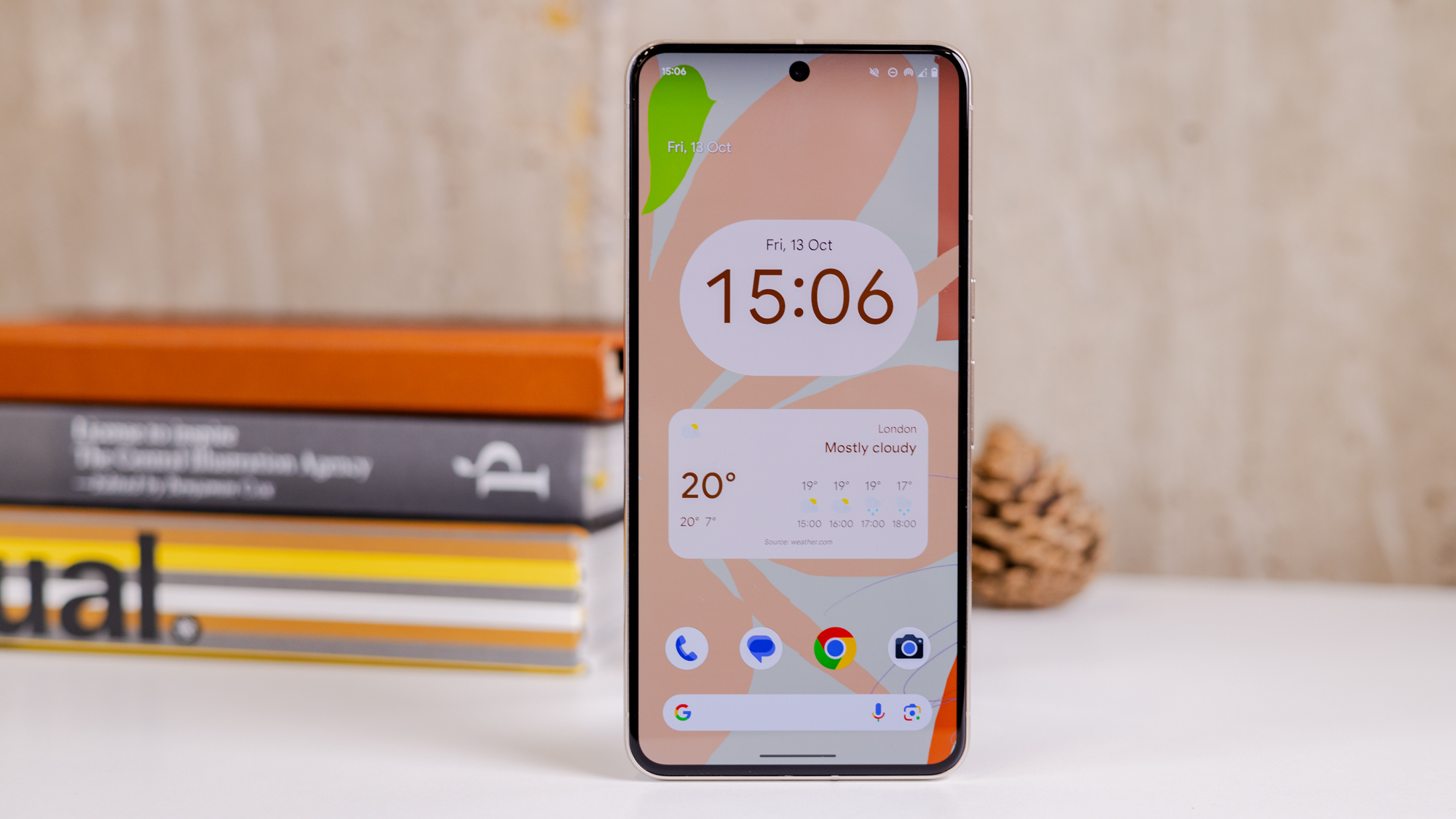
Pros
- Incredible versatile rear cameras
- Excellent 5x zoom
- Superb selfie lens
- Great software processing
Cons
- Huge phone
- Hit-and-miss AI tools
The Pixel 8 Pro is a refined version of 2022’s Pixel 7 Pro. It might not be the best camera outright anymore, but it’s a close second – especially if you spend most of your time pointing and shooting as opposed to diving into settings.
We still think the Pixel, shot for shot, takes some of the best still images in most lighting conditions. Photos are well balanced with good colour reproduction and detail without over-sharpening. The experience in the camera app is great, with great flexibility to shoot with the amazing 50Mp main sensor, 48Mp ultrawide, or a very capable 48Mp 5x optical zoom lens.
The core sensors are great, but it’s the software that improves even further. Zooming up to 10x with Google’s Super Res Zoom smarts means hardly any loss in quality, and the clever Magic Eraser tool lets you (sometimes) successfully erase people objects or even background noise from photos and videos to create a better scene.
But the headline new feature is Best Take, which lets you swap out people’s faces in group shots where you’ve taken more than one photo. It’s far from flawless – especially on the (otherwise very good) 10.5Mp selfie camera. Magic Editor is much more effective, though.
Video is very good too (especially with Night Sight now included), but really the Pixel is all about that 50Mp main lens and just how good images consistently look. You’ll probably take more photos with a Pixel in your pocket, which is the biggest compliment you can give a phone camera.
If you’re looking for a more compact phone, consider the regular Google Pixel 8. But there’s no telephoto lens and the ultrawide is significantly worse.
3. Samsung Galaxy S24 Ultra – Most versatile
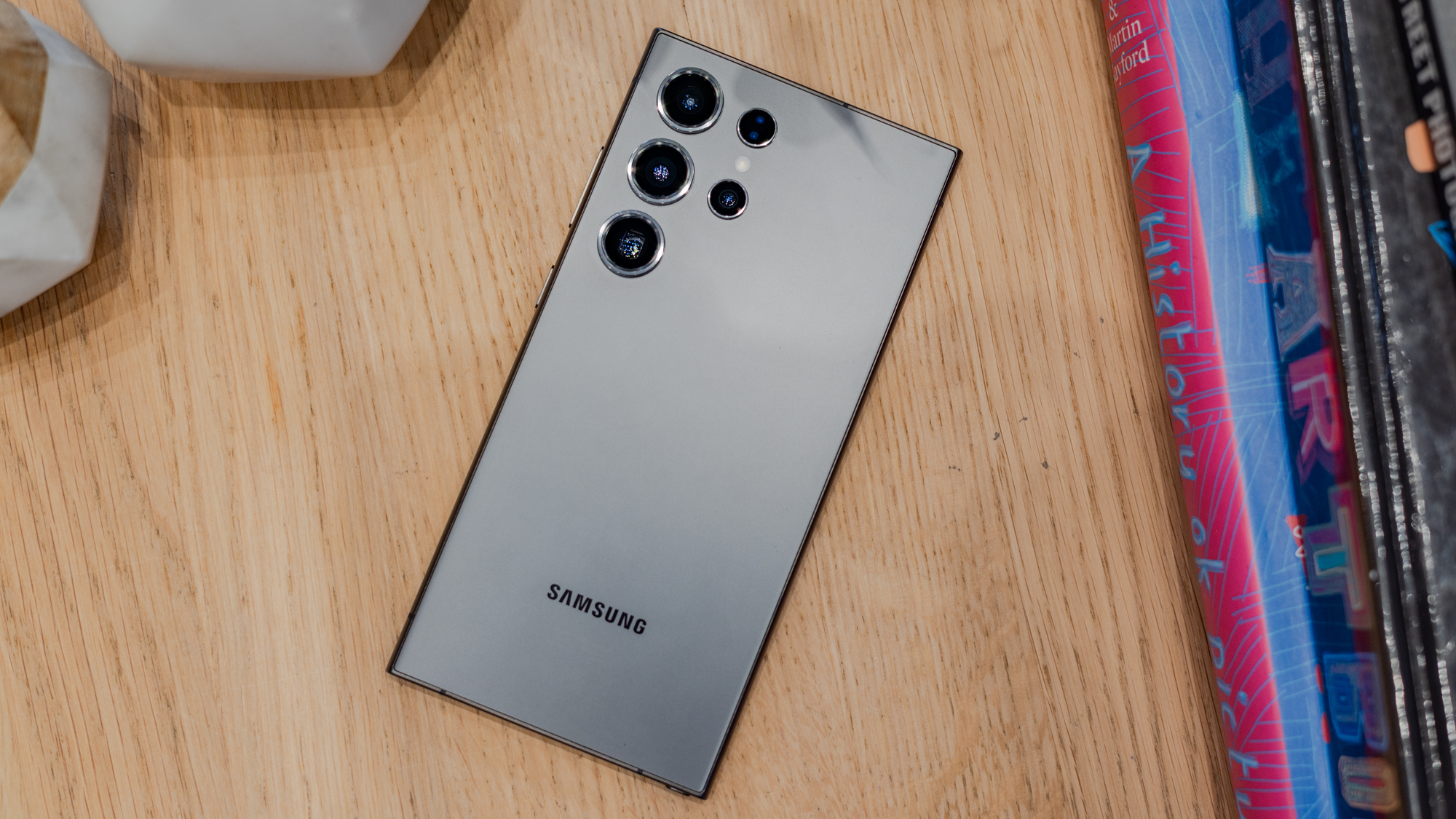
Pros
- Excellent main sensor
- Solid ultrawide lens
- 3x and 5x optical zoom
- Very good low light performance
- Impressive selfie camera
Cons
- No 10x telephoto
- Not the best macro mode
The Galaxy S24 Ultra is a small step down from the Xiaomi 14 Ultra and Pixel 8 Pro, but it still has an excellent – and very versatile – camera system.
As usual, the 200Mp lens takes 12.5Mp images by default, but this ensures superb quality without taking up loads of storage. In all environments, including low light, it takes superb stills.
While ditching the S23 Ultra‘s 10x telephoto lens for a 5x version might sound like a downgrade, but it actually means you get optical zoom in the 3-5x range, rather than relying on digital, as was the case before. The ultrawide lens also avoids any significant drop-off in quality, something which often affects cheaper camera phones.
Portrait mode is also strong, especially with the rare ability to adjust the level of background blur after the image has been taken. Macro mode isn’t the best, though the same can be said for most phone cameras, while the 12Mp selfie camera and video capture are both impressive.
The S24 Ultra is about so much more than just great cameras, but its photography and videography abilities remain among the very best.
4. iPhone 15 Pro Max – Best for video
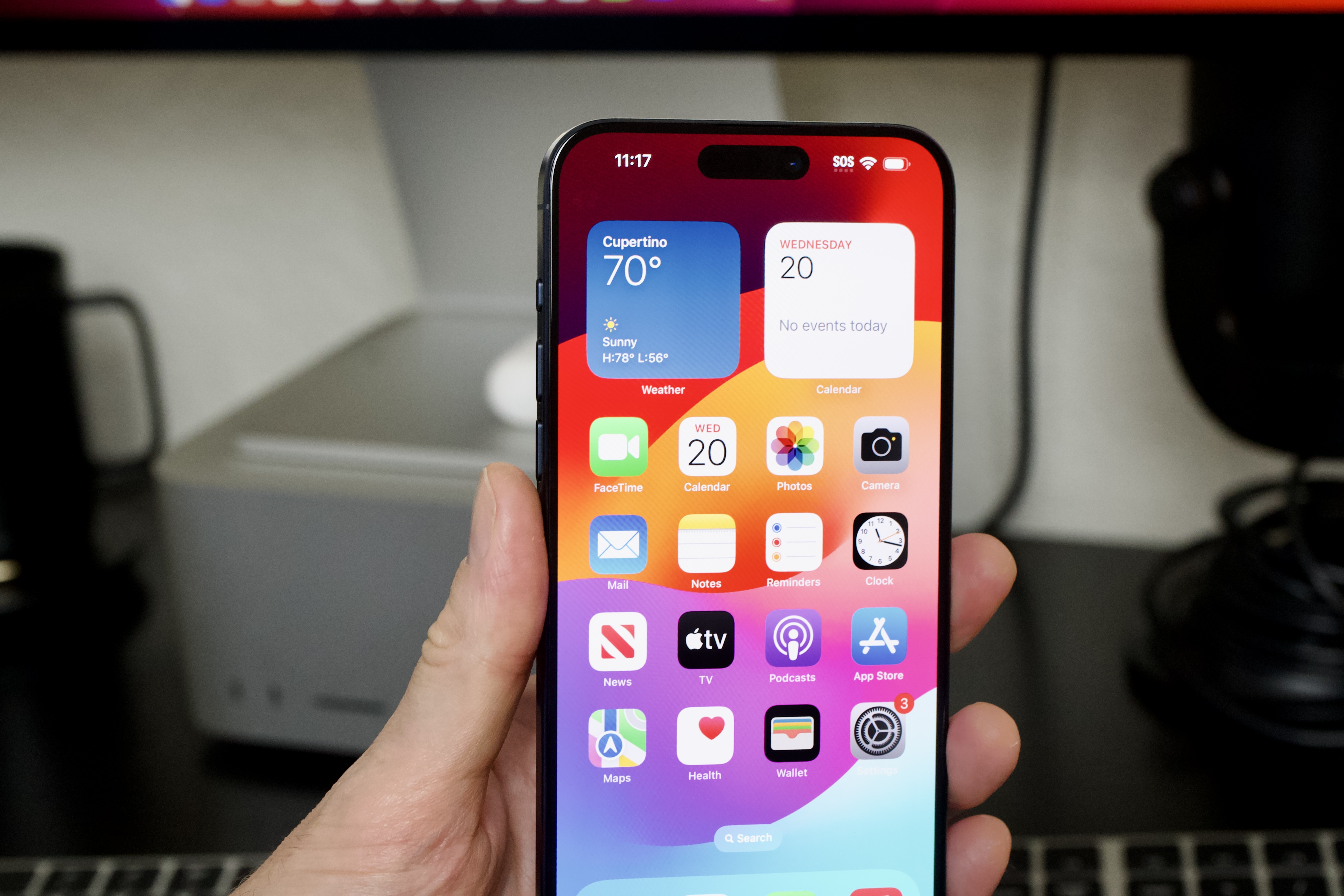
Pros
- Superb video
- Excellent, versatile photos
- Top-tier selfie camera
Cons
- Minor blur and edge detection issues
- Expensive
The iPhone is still the gold standard when it comes to smartphone video, and the 15 Pro Max is the best example of that.
It can capture in up to 4K at 60fps, but even the default 1080p at 30fps looks superb. With optical image stabilisation (OIS) on both the 48Mp main and 12Mp, 5x telephoto lenses, footage remains steady regardless of what you’re doing. Even with the 12Mp ultrawide, footage isn’t bad.
The phone is also up there with the best smartphone for photos, capturing excellent, true-to-life images in almost all environments – including low light. Portrait-style shots are very good, while the 12Mp selfie lens is still arguably the best in the business.
The only noticeable issues are some blur with moving subjects at night, plus occasional edge detection issues during selfie portraits. Aside from that, it’s a near-flawless camera phone, albeit a very expensive one.
If you don’t need the 5x telephoto, it’s also worth considering the iPhone 15 Pro.
5. Honor Magic 6 Pro – Best in low light
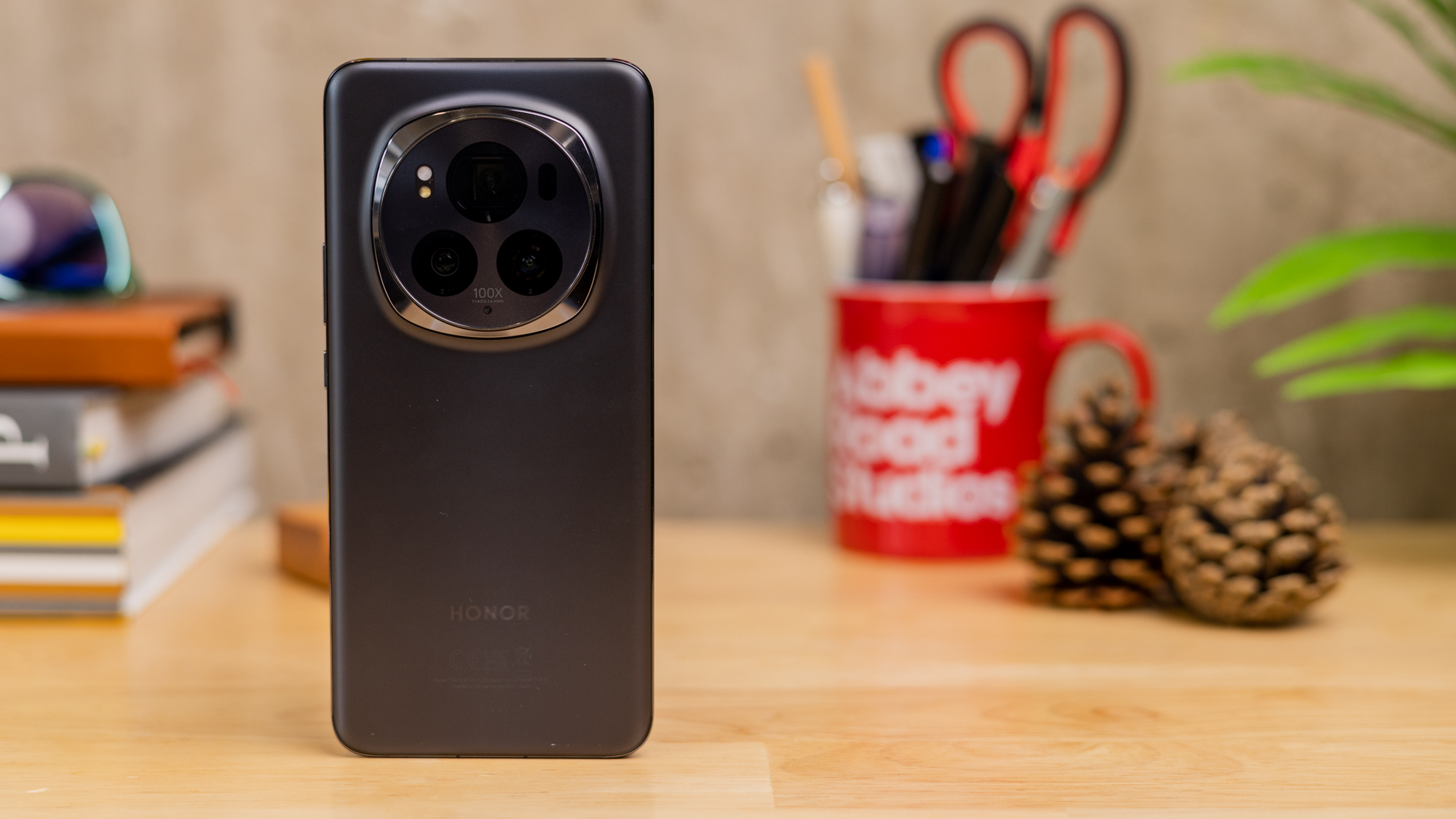
Pros
- Excellent variable aperture main camera
- Superb 2.5x telephoto
- Great selfie lens
Cons
- Not the best ultrawide sensor
- Expensive
The Magic 6 Pro is Honor’s best phone to date, and the best camera phone the company has ever released in Europe. Three of its four cameras are among the very best around.
The 50Mp main lens has a variable aperture, allowing it to move between f/1.4 and f/2.0 depending on the environment. This enables some of the best low-light camera performance on any smartphone, plus excellent portrait photos with superb edge detection. And with optical image stabilisation, video is also much better than you’ll find on most Android phones.
2.5x optical zoom on the 180Mp telephoto might not sound like much, buy you can crop in on these high-resolution shots and still get the equivalent of a 5x zoom. The 50Mp selfie camera is another highlight, with strong results in all environments – including when pitch black. A 3D depth sensor next to it enables good portrait shots, but also a credible, secure Android rival to Face ID on the iPhone.
The one disappointment is the 50Mp ultrawide camera, which is a significant step down in terms of image quality. You might be hoping for better when you’re paying this much, but it’s hard to fault the Honor Magic 6 Pro’s cameras in pretty much all other areas.
6. Xiaomi 14 – Best design
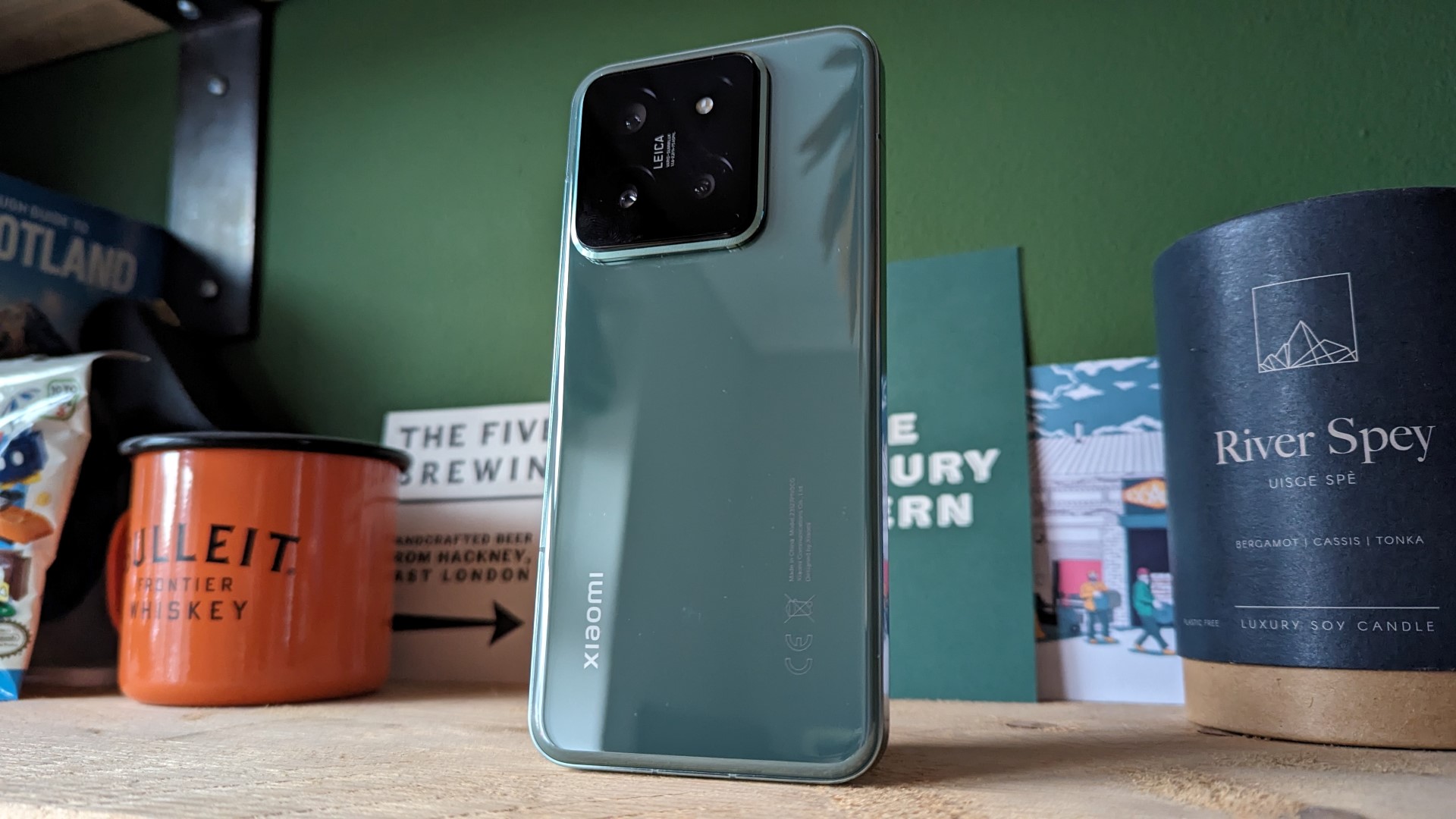
Pros
- Stellar main lens
- Strong 3.2x telephoto and ultrawide
- Impressive selfie camera
- Gorgeous design
Cons
- No variable aperture main lens
- No 5x telephoto
The Xiaomi 14’s cameras aren’t quite as good as the 14 Ultra’s. It’s missing the 5x telephoto lens and separate depth sensor on the back, while the main 50Mp lens doesn’t have a variable aperture.
However, this is still a superb camera phone that more than justifies its inclusion here. The main lens still captures superb, detail-filled photos in almost any conditions, while the ultrawide and 3.2x telephoto enable wide and zoom shots without any significant drop-off in image quality.
Portrait shots and low-light photograph are both excellent, while the front-facing selfie camera is one of the best around. Very good video cement it as one of the finest camera phones around.
Aside from price, the main reason to buy the Xiaomi 14 over the 14 Ultra is its design. The regular 14 is relatively compact by modern standards, making it easy to hold and use, yet it still feels like a luxurious device.
7. iPhone 15 – Best for selfies
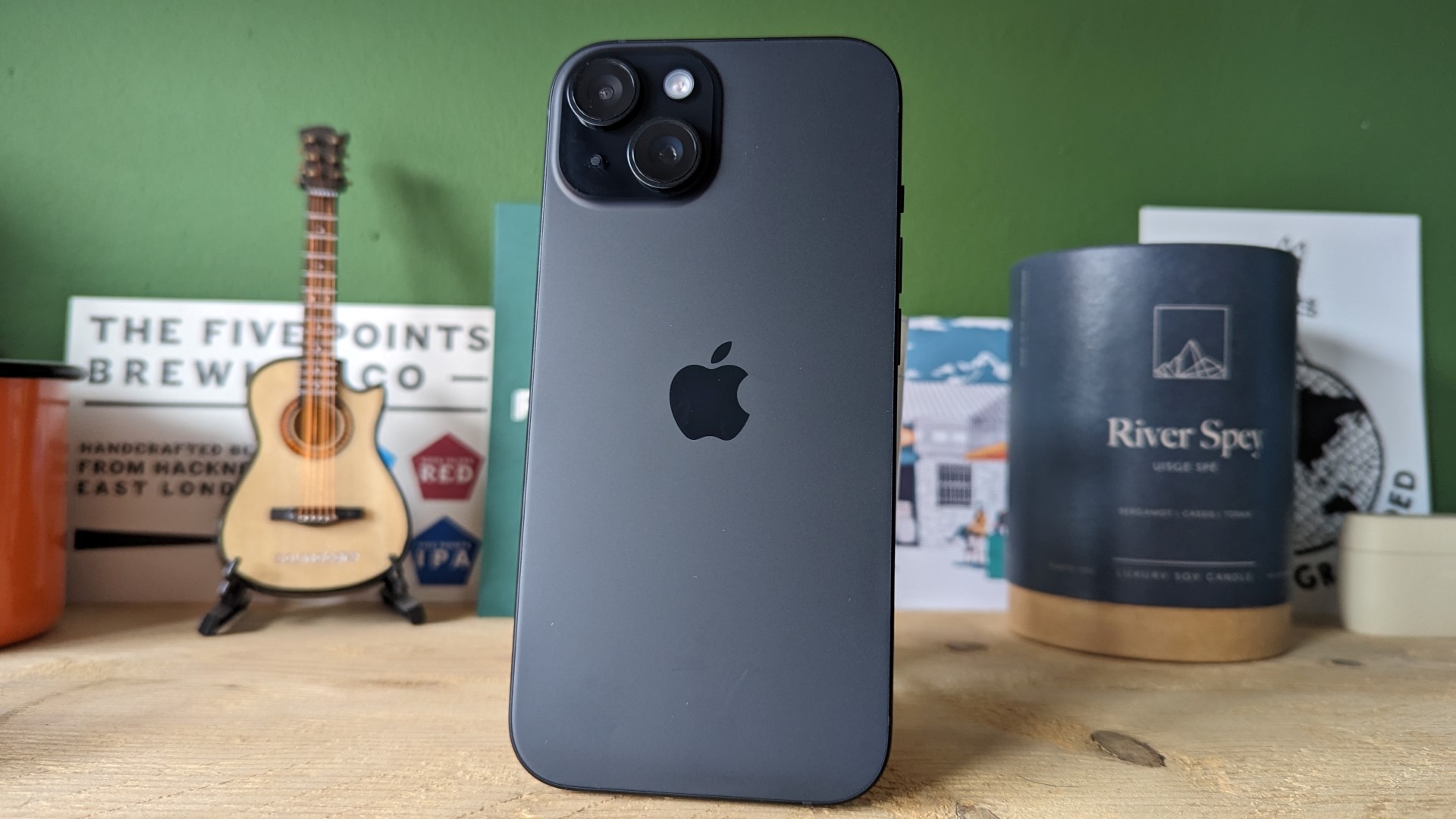
Pros
- Superb dual cameras
- Excellent processing
- Top drawer selfie camera
Cons
- No telephoto
- Autofocus can be slow
The regular iPhone 15’s cameras have a big upgrade, with the main rear sensor moving from 12Mp to 48Mp. It’s not quite the same lens as the iPhone 14 Pro or 15 Pro, but still very good.
It performs well in almost all environments, with Apple’s excellent software processing coming to the fore. Portrait mode photos are particularly good, and it’s great to be able to add the background blur after you’ve taken the shot. You can also shoot the full 48Mp RAW image, but most people are better off relying on the usual pixel binning to create a 12Mp image that takes up less storage space.
The 12Mp ultrawide remains and offers good flexibility, though there’s still no telephoto lens. Instead, you’ll be relying on lower-quality digital zoom.
But the 12Mp front-facing camera is class-leading, and it’s great to see the same sensor here as the iPhone 15 Pro. For the best selfies, there’s no need to pay more – even if you want the Dynamic Island, which is now here.
Video is another key strength, and still better than you’ll find on any Android phone. There’s no real difference in the quality of footage compared to the more expensive iPhone 15 models, so you can save some money if that’s the top priority.
If you’re looking for a bigger screen, consider the iPhone 15 Plus instead.
Read our full Apple iPhone 15 review
8. Google Pixel 7a – Best value
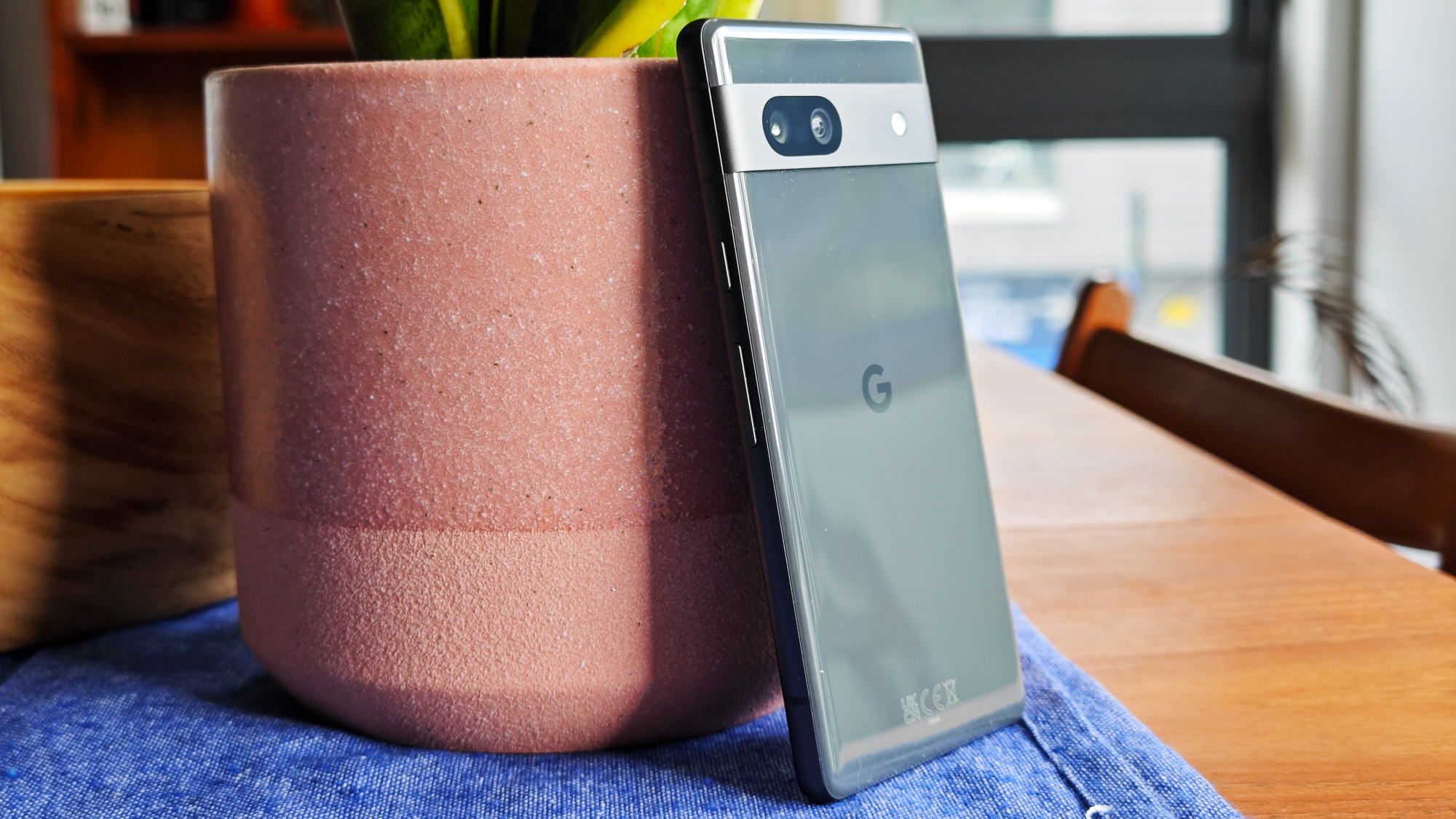
Pros
- Superb 64Mp main lens
- Decent 12Mp ultrawide
- Strong selfie camera
Cons
- No telephoto camera
- Selfie camera struggles in low light
The Pixel 7a is no longer Google’s latest mid-range phone – that award goes to the Pixel 8a.
However, there have been no changes to the camera hardware on the newer model, while the 7a can often be found with some big discount. If you want a great camera phone without paying a lot of money, the Pixel 7a is undoubtedly the device to get.
Much of this is centred around the 64Mp main rear lens, which remains one of the very best for point-and-shoot photography. Without changing any settings, you can jump into the camera app and take excellent photos almost every time – regardless of the lighting conditions.
There is a drop-off when switching to the 12Mp ultrawide, but there’s not too much of a drop-off in image quality, making it a useful alternative. The lack of any telephoto camera is the main frustration, with digital zoom a poor alternative.
However, on the front, the 13Mp selfie lens is among the best around in good lighting conditions, with the option for realistic portrait-style shots (just like the main camera). You also get 4K video on all three lenses and useful AI editing features.
Overall, for the price you can often get it for in 2024, the Pixel 7a is a no-brainer when it comes to great phone photos on a budget.
9. Samsung Galaxy S24 – Best small premium option
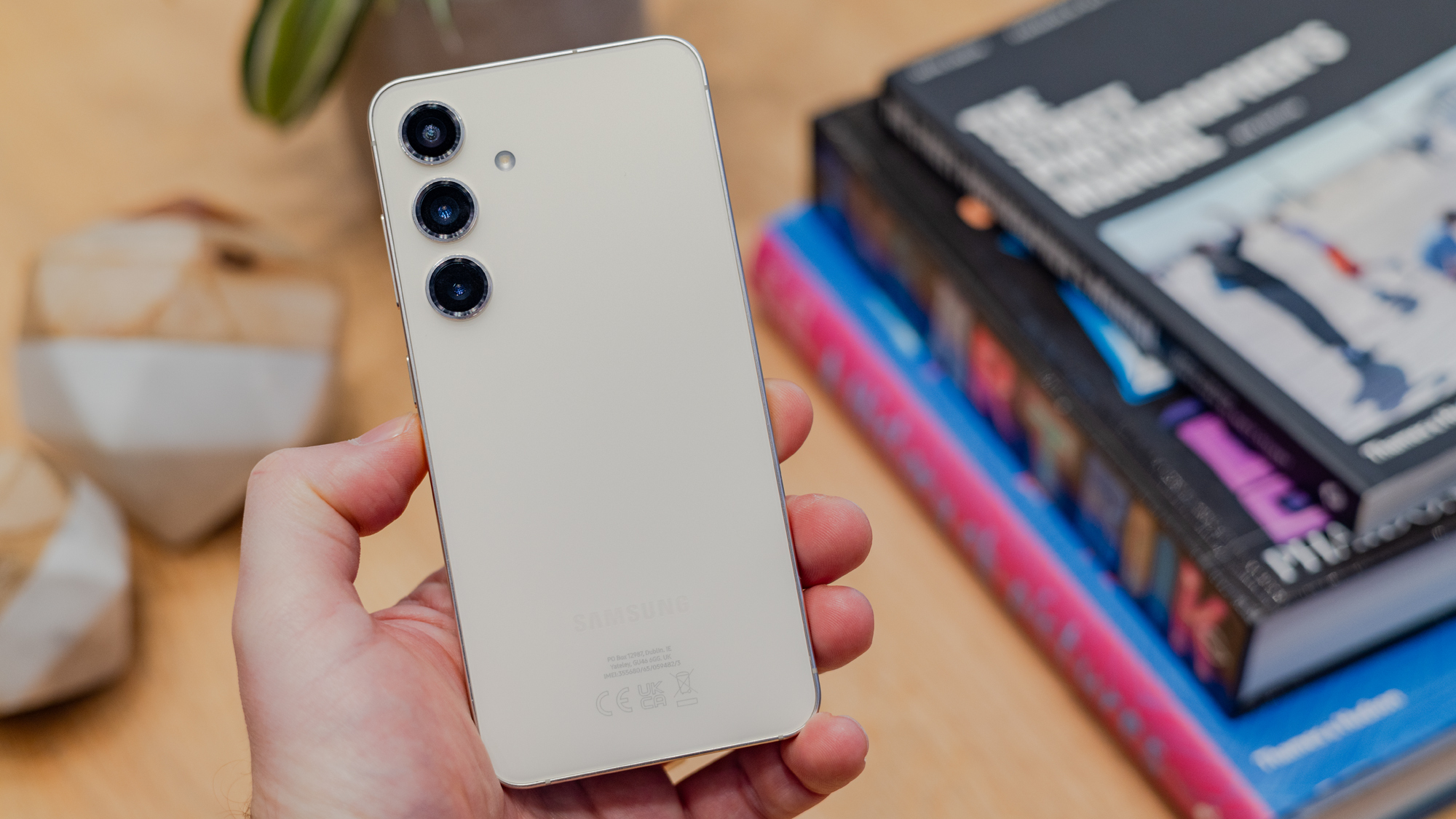
Pros
- Excellent 50Mp main rear lens
- Useful 10Mp 3x telephoto
- Strong 12Mp selfie camera
- Decent video
Cons
- Ultrawide struggles in low light
- Missing 5x telephoto from S24 Ultra
As an all-round phone, the Galaxy S24+ has the slight edge on the regular Galaxy S24. But it’s also significantly more expensive
If camera quality is your top priority, there’s no need to spend more unless you want to step up to the S24 Ultra. Despite being a relatively compact phone, the regular S24 has some superb camera hardware which delivers some great results across both photos and video.
Its 50Mp main lens is very capable in all environments, but particularly low light, where the large sensor allows it to capture plenty of light. The level of detail it can provide is excellent, while colours are more natural than we’ve seen from Samsung phones in the past.
The 10Mp telephoto offers the flexibility of a 3x optical zoom, meaning you can get some excellent zoom shots or portraits, which the S24 handles well. Elsewhere, the 12Mp ultrawide isn’t as much of a downgrade compared to the main lens as it sounds, though it tends to struggle a lot more in low light.
And on the front, you can expect high-quality selfies from the 12Mp lens, making it a very good all-round camera system with few weaknesses. The phones above it in this list are all technically better in one aspect, but the combination of Galaxy AI and a relatively affordable price tag make the Galaxy S24 a great alternative.
10. OnePlus Open – Best foldable
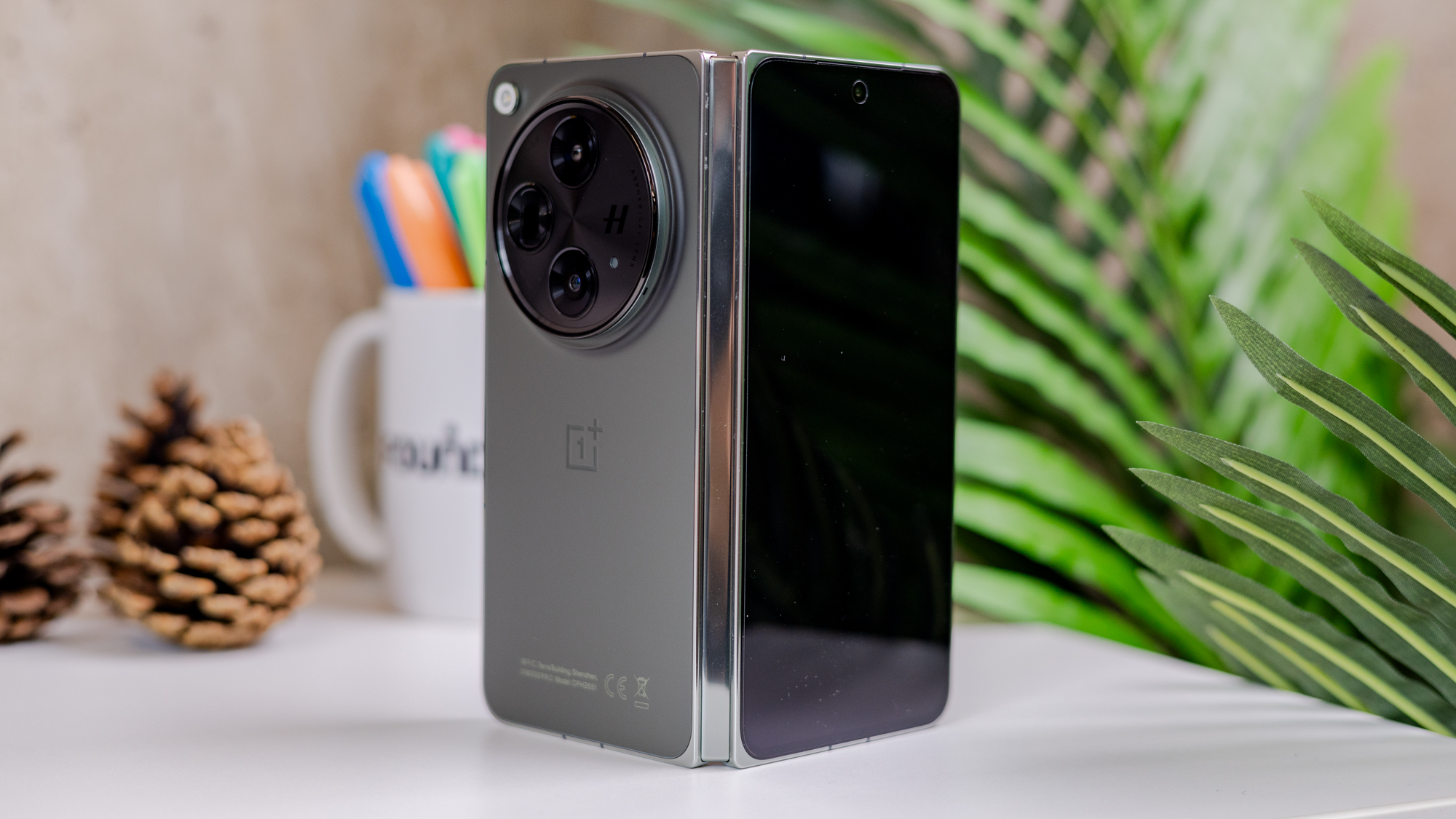
Pros
- Great 64Mp telephoto camera
- Very good 48Mp main and 48Mp ultrawide lens
- Can use rear cameras for selfies
Cons
- Disappointing night mode
- Underwhelming front-facing cameras
In general, the cameras on folding phones are a step down from the absolute best you’ll find on a regular smartphone. But while all the other phones on this list have slightly better cameras, the photography experience on the OnePlus Open is the best we’ve seen on a foldable.
Each of the three rear sensors are flagship level, with the 64Mp ultrawide a particular highlight with its 3x optical zoom. The 64Mp main lens handles both architecture and landscapes well, and can produce some excellent portrait shots.
And unlike many phones the 48Mp ultrawide lens is only a small step down in quality. The cameras here are on par with the flagship OnePlus 11, which is great to see.
However, they’re not perfect. The night mode is largely ineffective at brightening low-light shots, while the cameras above the cover and internal displays aren’t great. At least you can easily use the rear cameras for selfies.
FAQ
How many lenses do you need?
It depends what kind of photos you want to take on your phone. For close up, point and shoot pictures of people, pets, and landscapes then you might only need one.
But most phones have at least two lenses on the back these days. This is usually a superior main lens for still shots and video, and an ultrawide angle lens for taking in more of a scene that you’re closer to like a building or group shot.
Do you need a telephoto camera?
Some phones have three or four lenses – the one or two extra are usually telephoto lenses than can zoom in to subjects without loss of quality to a certain level. For example, the iPhone 14 Pro has a 3x optical zoom lens so you can zoom in to a 3x level – if you zoom beyond that, the phone is using digital zoom, which degrades in quality.
The regular iPhone 15 has no telephoto lens, so all zoom is done digitally. Check the specs of the phone you are interested in to see what lenses it has.
Do megapixels matter?
A higher megapixel doesn’t always mean better. It can sometimes be an indication, but not always.
Smartphones have necessarily tiny lenses in them, so phone companies have created software to improve the final image you get after you press the shutter. Software is also used for common features like portrait modes to create a blur effect. Read on to find out more.
What is image processing?
Every smartphone camera uses software to process the image you’ve just taken to improve it. This usually involves sharpening the image, boosting, or saturating the colours to make them ‘pop’ more, and improving the high dynamic range (HDR) to make the photo look generally better than it might otherwise.
It’s hard to know if a phone camera will be good just by reading the spec sheet, which is why camera quality is one of the main things we assess in Tech Advisor’s phone reviews. Click through to the full reviews of the phones in this list to see image samples and our detailed opinions.
What is pixel binning?
Some phone cameras, like the Galaxy S24 Ultra’s 200Mp main lens, can take photos at full resolution. But on that phone by default images are ‘binned’ down to 12.5Mp from 200Mp.
The higher megapixel count in this instance captures more image data but uses it to produce a final image with a smaller file size. This creates easily shareable, social media friendly images, but also is a good way for phone cameras to combine image data with image processing to make the best possible image.
A 12.5Mp pixel binned image on the S24 Ultra will very likely be better than a straight 64Mp image from a mid-range phone that doesn’t use pixel binning.




